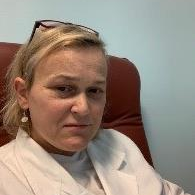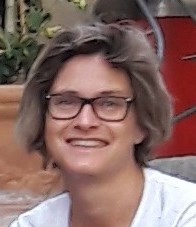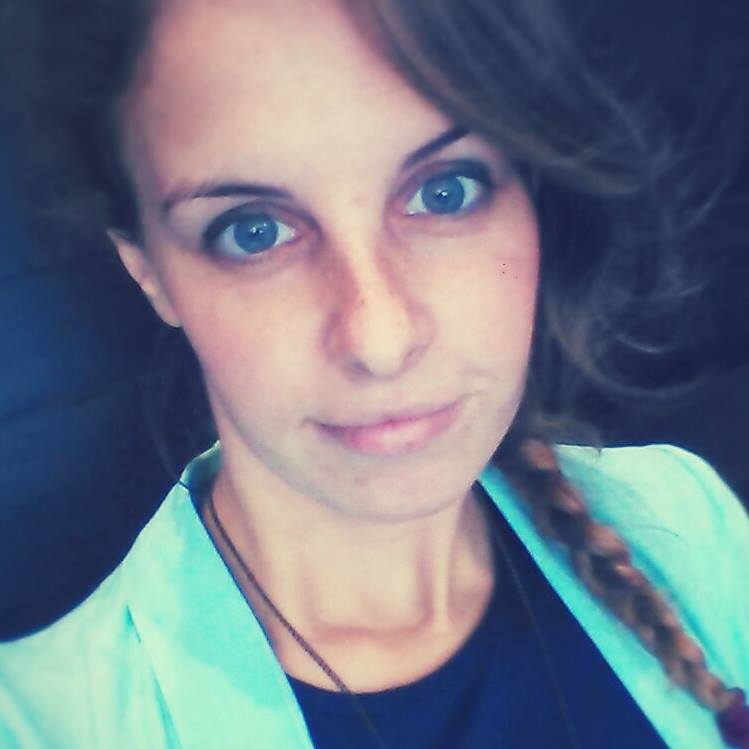Studying at the University of Verona
Here you can find information on the organisational aspects of the Programme, lecture timetables, learning activities and useful contact details for your time at the University, from enrolment to graduation.
Academic calendar
The academic calendar shows the deadlines and scheduled events that are relevant to students, teaching and technical-administrative staff of the University. Public holidays and University closures are also indicated. The academic year normally begins on 1 October each year and ends on 30 September of the following year.
Course calendar
The Academic Calendar sets out the degree programme lecture and exam timetables, as well as the relevant university closure dates..
| Period | From | To |
|---|---|---|
| FISIO ROV 2A1S | Oct 7, 2019 | Dec 20, 2019 |
| FISIO ROV 3A1S | Oct 7, 2019 | Nov 20, 2019 |
| FISIO ROV 1A1S | Oct 9, 2019 | Dec 13, 2019 |
| FISIO ROV 2A2S | Feb 10, 2020 | Apr 8, 2020 |
| FISIO ROV 1A2S | Mar 5, 2020 | Jun 5, 2020 |
| FISIO ROV 3A2S | Mar 23, 2020 | May 8, 2020 |
| Session | From | To |
|---|---|---|
| FISIO ROV SESSIONE INVERNALE 1 ANNO | Jan 7, 2020 | Jan 31, 2020 |
| FISIO ROV SESSIONE INVERNALE 3 ANNO | Jan 13, 2020 | Jan 24, 2020 |
| FISIO ROV SESSIONE INVERNALE 2 ANNO | Jan 13, 2020 | Feb 7, 2020 |
| FISIO ROV SESSIONE ESTIVA 3 ANNO (1 appello) | Mar 9, 2020 | Mar 20, 2020 |
| FISIO ROV SESSIONE ESTIVA 1 ANNO | Jun 24, 2020 | Jul 28, 2020 |
| FISIO ROV SESSIONE ESTIVA 3 ANNO (2 appello) | Jun 25, 2020 | Jul 29, 2020 |
| FISIO ROV SESSIONE ESTIVA 2 ANNO | Jul 13, 2020 | Jul 31, 2020 |
| FISIO ROV SESSIONE AUTUNNALE | Sep 1, 2020 | Sep 30, 2020 |
| Session | From | To |
|---|---|---|
| FISIO SESSIONE AUTUNNALE | Nov 1, 2020 | Dec 22, 2020 |
| FISIO SESSIONE PRIMAVERILE | Mar 1, 2021 | Apr 30, 2021 |
| Period | From | To |
|---|---|---|
| FESTIVITA' OGNISSANTI | Nov 1, 2019 | Nov 1, 2019 |
| FESTIVITA' IMMACOLATA CONCEZIONE | Dec 8, 2019 | Dec 8, 2019 |
| Vacanze di Natale | Dec 24, 2019 | Jan 6, 2020 |
| VACANZE DI PASQUA | Apr 10, 2020 | Apr 15, 2020 |
| FESTA DELLA LIBERAZIONE | Apr 25, 2020 | Apr 25, 2020 |
| Festa del Lavoro | May 1, 2020 | May 1, 2020 |
| FESTA DELLA REPUBBLICA | Jun 2, 2020 | Jun 2, 2020 |
| FESTA S. PATRONO | Aug 5, 2020 | Aug 5, 2020 |
| Description | Period | From | To |
|---|---|---|---|
| FISIO ROV 3^ ANNO - 1^ SEMESTRE (1 periodo) | FISIO ROV 3^ ANNO - 1^ SEMESTRE (1 periodo) | Nov 21, 2019 | Dec 20, 2019 |
| FISIO ROV 3^ ANNO - 1^ SEMESTRE (2 periodo) | FISIO ROV 3^ ANNO - 1^ SEMESTRE (2 periodo) | Jan 27, 2020 | Feb 28, 2020 |
| FISIO ROV 1^ ANNO - 1^ SEMESTRE | FISIO ROV 1^ ANNO - 1^ SEMESTRE | Feb 3, 2020 | Mar 4, 2020 |
| FISIO ROV 2^ ANNO - 1^ SEMESTRE | FISIO ROV 2^ ANNO - 1^ SEMESTRE | Apr 20, 2020 | May 22, 2020 |
| FISIO ROV 3^ ANNO - 2^ SEMESTRE (1 periodo) | FISIO ROV 3^ ANNO - 2^ SEMESTRE (1 periodo) | May 11, 2020 | Jun 17, 2020 |
| FISIO ROV 2^ ANNO - 2^ SEMESTRE | FISIO ROV 2^ ANNO - 2^ SEMESTRE | Jun 3, 2020 | Jul 10, 2020 |
| FISIO ROV 3^ ANNO - 2^ SEMESTRE (2 periodo) | FISIO ROV 3^ ANNO - 2^ SEMESTRE (2 periodo) | Sep 1, 2020 | Sep 29, 2020 |
| FISIO ROV 1^ ANNO - 2^ SEMESTRE | FISIO ROV 1^ ANNO - 2^ SEMESTRE | Sep 1, 2020 | Sep 29, 2020 |
Exam calendar
Exam dates and rounds are managed by the relevant Medicine Teaching and Student Services Unit.
To view all the exam sessions available, please use the Exam dashboard on ESSE3.
If you forgot your login details or have problems logging in, please contact the relevant IT HelpDesk, or check the login details recovery web page.
Should you have any doubts or questions, please check the Enrollment FAQs
Academic staff
 elena.bravi@apss.tn.it
elena.bravi@apss.tn.it
 manuela.cappuccini@apss.tn.it
manuela.cappuccini@apss.tn.it
 cembrani@apss.tn.it
cembrani@apss.tn.it
 0461 515402
0461 515402
 quagliadiego@gmail.com
quagliadiego@gmail.com
 roberta.zanoni@univr.it
roberta.zanoni@univr.it
Study Plan
The Study Plan includes all modules, teaching and learning activities that each student will need to undertake during their time at the University.
Please select your Study Plan based on your enrollment year.
1° Year
| Modules | Credits | TAF | SSD |
|---|
2° Year activated in the A.Y. 2020/2021
| Modules | Credits | TAF | SSD |
|---|
3° Year activated in the A.Y. 2021/2022
| Modules | Credits | TAF | SSD |
|---|
| Modules | Credits | TAF | SSD |
|---|
| Modules | Credits | TAF | SSD |
|---|
| Modules | Credits | TAF | SSD |
|---|
Legend | Type of training activity (TTA)
TAF (Type of Educational Activity) All courses and activities are classified into different types of educational activities, indicated by a letter.
Kinesiology and functional evaluation (2019/2020)
The teaching is organized as follows:
Learning outcomes
Provide the basic knowledge of the physiology of the motor system, biomechanics, kinesiology and functional/evaluation methods in physiotherapy. PHYSIOLOGY OF MOTOR SYSTEM Provide knowledge to understand the physiology of the skeletal muscles and the neurophysiologic mechanism of motor control. Know the organisation of systems which control human body move-ments. BIOMECHANICS AND SEGMENTAL KINESIOLOGY Understand and analyse the mechanical aspects of movements based on kinematic and dynamic movements of human body. Describe physiologic and joint movements. Understand biomechanical factors that affect muscles capacity of generating force. Analyse and visualise the forces acting on specific joints and calculate internal and external mo-ments in static and dynamic contexts. Describe the inertial proprieties and frictional forces and understand how these factors may influ-ence human movements, both in local and global contexts. Know viscoelastic proprieties of tissues. Know joints physiology of the human body and analyse muscular actions, stress and stretching of the joints and the specific biomechanics. Analyse in a clinical perspective, mechanical movements taking into consideration all these aspects: kinematics, kinetics, muscular roles, levers, inertial system and additional variables. FUNCTIONAL KINESIOLOGY Understand concepts such as muscle chains, synergistic muscles, agonist/antagonist muscles, stabili-zation, muscles relating to functional gestures. Know the biomechanics of physiological and functional movements of the spine, static positions (supine, sitting, standing) and basic functional gestures involving different joints (such as postural changes). Know and evaluate the biomechanics of muscles of the upper limbs (reaching, catching, manipula-tion). Know and evaluate the biomechanics of muscles of the lower limbs (walking, climbing and going down the stairs). Be able to describe posture, postural changes and functional gestures alterations (walking, climbing and going down the stairs, reaching, catching, manipulation of objects) and describe, in a general way, the possible biomechanical causes. FUNCTIONAL EVALUATION IN PHYSIOTHERAPY Perform joint and muscular evaluation in all body parts by recognising qualitative and quantitative alterations, circumferential measurement of limbs, evaluation of the main cardiocirculatory and res-piratory parameters. Relevant supplementary data with observation of postural and gestures alterations. Know the physi-otherapy assessment scales to evaluate complex phenomena with their psychometric proprieties. Use in a proper way physiotherapy assessment scales (self-administered or administered by the physiotherapist).
Bibliography
| Author | Title | Publishing house | Year | ISBN | Notes |
|---|---|---|---|---|---|
| Perry J. | Analisi del movimento | 2005 | |||
| I.A. Kapandji | Anatomia funzionale | 2011 | |||
| Neumann | Kinesiology of the musculoskeletal system: foundations for rehabilitation | 2016 | |||
| Belfiore et al. | Fisiologia umana - Fondamenti | edi-ermes | 2018 | 9788870516494 | |
| Purves D. Augustine GJ, Fitzpatrick D, Hall WC, LaMantia AS, White LE | Neuroscienze (Edizione 4) | Zanichelli | 2013 | 9788808179289 | |
| Clarkson H.M. | Valutazione cinesiologica. Esame della mobilità articolare e della forza muscolare. (Edizione 2) | Edi-ermes | 2002 |
Career prospects
Module/Programme news
News for students
There you will find information, resources and services useful during your time at the University (Student’s exam record, your study plan on ESSE3, Distance Learning courses, university email account, office forms, administrative procedures, etc.). You can log into MyUnivr with your GIA login details: only in this way will you be able to receive notification of all the notices from your teachers and your secretariat via email and soon also via the Univr app.
Graduation
Documents
| Title | Info File |
|---|---|
|
|
pdf, it, 367 KB, 19/02/24 |
|
|
pdf, it, 142 KB, 19/01/24 |
|
|
pdf, it, 862 KB, 19/01/24 |
|
|
pdf, it, 273 KB, 25/03/24 |
Gestione carriere
Orario lezioni
Documents
| Title | Info File |
|---|---|
|
|
pdf, it, 525 KB, 22/09/23 |
|
|
pdf, it, 39 KB, 17/04/24 |
|
|
pdf, it, 33 KB, 17/04/24 |
|
|
pdf, it, 1453 KB, 07/02/24 |
Student login and resources
Attività Seminariali/a scelta dello studente
Attività Seminariali/a scelta dello studente



















